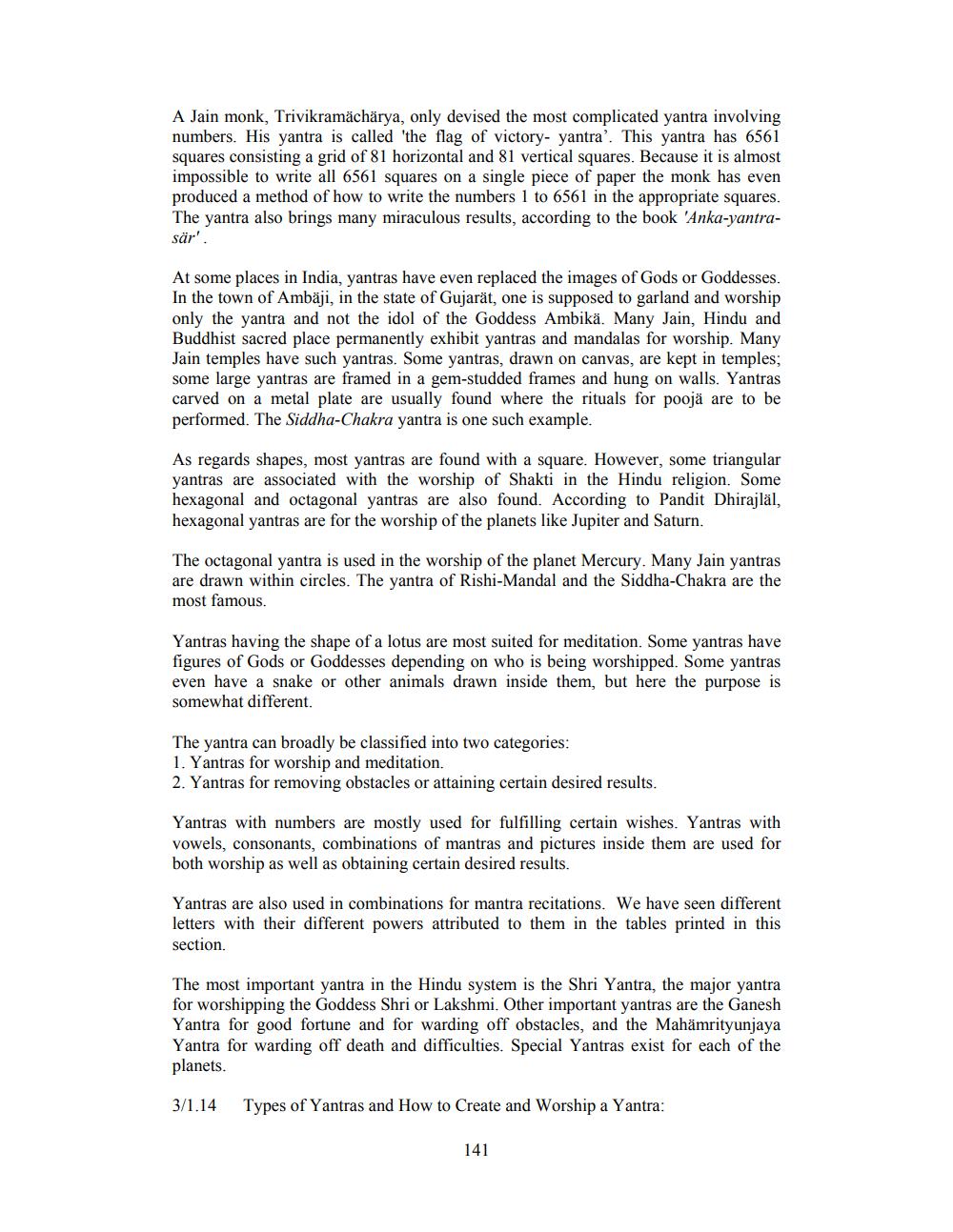________________
A Jain monk, Trivikramächärya, only devised the most complicated yantra involving numbers. His yantra is called 'the flag of victory- yantra'. This yantra has 6561 squares consisting a grid of 81 horizontal and 81 vertical squares. Because it is almost impossible to write all 6561 squares on a single piece of paper the monk has even produced a method of how to write the numbers 1 to 6561 in the appropriate squares. The yantra also brings many miraculous results, according to the book 'Anka-yantrasär'.
At some places in India, yantras have even replaced the images of Gods or Goddesses. In the town of Ambäji, in the state of Gujarät, one is supposed to garland and worship only the yantra and not the idol of the Goddess Ambikä. Many Jain, Hindu and Buddhist sacred place permanently exhibit yantras and mandalas for worship. Many Jain temples have such yantras. Some yantras, drawn on canvas, are kept in temples, some large yantras are framed in a gem-studded frames and hung on walls. Yantras carved on a metal plate are usually found where the rituals for poojä are to be performed. The Siddha-Chakra yantra is one such example.
As regards shapes, most yantras are found with a square. However, some triangular yantras are associated with the worship of Shakti in the Hindu religion. Some hexagonal and octagonal yantras are also found. According to Pandit Dhirajläl, hexagonal yantras are for the worship of the planets like Jupiter and Saturn.
The octagonal yantra is used in the worship of the planet Mercury. Many Jain yantras are drawn within circles. The yantra of Rishi-Mandal and the Siddha-Chakra are the most famous.
Yantras having the shape of a lotus are most suited for meditation. Some yantras have figures of Gods or Goddesses depending on who is being worshipped. Some yantras even have a snake or other animals drawn inside them, but here the purpose is somewhat different.
The yantra can broadly be classified into two categories: 1. Yantras for worship and meditation. 2. Yantras for removing obstacles or attaining certain desired results.
Yantras with numbers are mostly used for fulfilling certain wishes. Yantras with vowels, consonants, combinations of mantras and pictures inside them are used for both worship as well as obtaining certain desired results.
Yantras are also used in combinations for mantra recitations. We have seen different letters with their different powers attributed to them in the tables printed in this section.
The most important yantra in the Hindu system is the Shri Yantra, the major yantra for worshipping the Goddess Shri or Lakshmi. Other important yantras are the Ganesh Yantra for good fortune and for warding off obstacles, and the Mahämrityunjaya Yantra for warding off death and difficulties. Special Yantras exist for each of the planets.
3/1.14
Types of Yantras and How to Create and Worship a Yantra:
141




